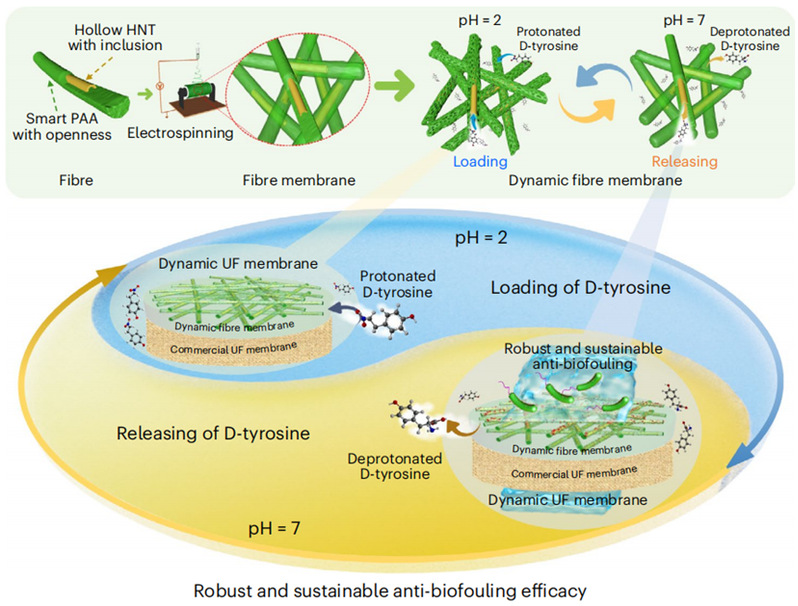NKU Team Makes New Progress in Sustainable Membrane Biofouling Control
Current surface-controlled biofouling-based membrane technologies are retarded by short-run anti-biofouling performances. However, Professor Guo Xiaoyan and her team from the School of Environmental Science and Engineering at Nankai University have recently designed and reported a new type of dynamic fiber membrane. With ingenuity and intelligence in external and internal spatial structures, this new membrane can dynamically and continuously load and release D-tyrosine as a biologically friendly biofilm inhibitor molecule. As a time-space-involved multi-dimensional membrane, it exhibits robust and sustainable anti-biofouling efficacy, opening up a new path for the development of environmentally friendly membrane-based water treatment technology. The result of this work entitled Rational design of dynamic fiber membrane for sustainable biofouling control was published in the leading international academic journal Nature Water on February 9 this year.
Membrane fouling is one of the most important challenges in membrane-based water treatment technology. The dynamic fiber membrane designed by the research team has the following features: (1) an innovative anti-biofouling design perspective that prioritizes the membrane interior with ample active sites for continuous loading and releasing of anti-biofouling agents; (2) the ingenious composition and structure design, incorporating the smart polyacrylic acid (PAA) with openness and the incorporation of hollow halloysite nanotube (HNT) with inclusion to form coaxial fibres, subsequently electrospinning into fibre membrane and finally construction into dynamic fibre membrane by sustainable loading and releasing D-tyrosine with symbiotic peculiarity for membrane and microorganism, thus providing an innovative space–time–dimension-involved paradigm to enable membrane biofouling control robust and sustainable; (3) an easily implementable operation design for exchanging D-tyrosine under pH conditions of 2 and 7, common in the chemical cleaning and filtration processes for most membranes, then facilitating the large-scale application of the dynamic fiber membrane in water treatment.

Schematic diagram of sustainable anti-biofouling of dynamic fiber membrane
The above sustainable membrane biofouling control strategy proposed by the research team opens up new avenues for the development of environmentally friendly membrane-based water treatment technology. This concept can also be extended to other systems plagued by biofouling, thereby promoting the development of advanced materials in methodology.
Nankai University is the first completion unit and communication unit for this work. Dr. Fan Shougang and Professor Zhou Qixing from Nankai University are the co-first authors, and Professor Guo Xiaoyan from Nankai University is the corresponding author.
Paper link:
https://doi.org/10.1038/s44221-024-00196-8
(Edited and translated by Nankai News Team.)









